Double Half Delta Loop (DHDL) Low Band Receiving Antenna
A few days ago I had the time to build and try a Double Half Delta Loop (DHDL) at our Contest Station ED1R. The Antenna was built within 3 hours and can be deployed/erected within 20 minutes.
The Antenna
The Double Half Delta Loop (DHDL) was developed by George, AA7JV for his Lowband Expedition to Chesterfield (TX3A). It’s a ground-independent Receiving antenna which only needs two 10m support poles. Once the wires are cut and the Balun build, it takes less than 20 minutes to deploy the antenna.
A detailed description can be found at OK1RR’s website, the DHDL simulation files can be downloaded at the TX3A website and IV3PRK’s report about two broadside phased DHDLs is also worth reading.

3D View on the Simulation Model

DHDL in the backyard of ED1R
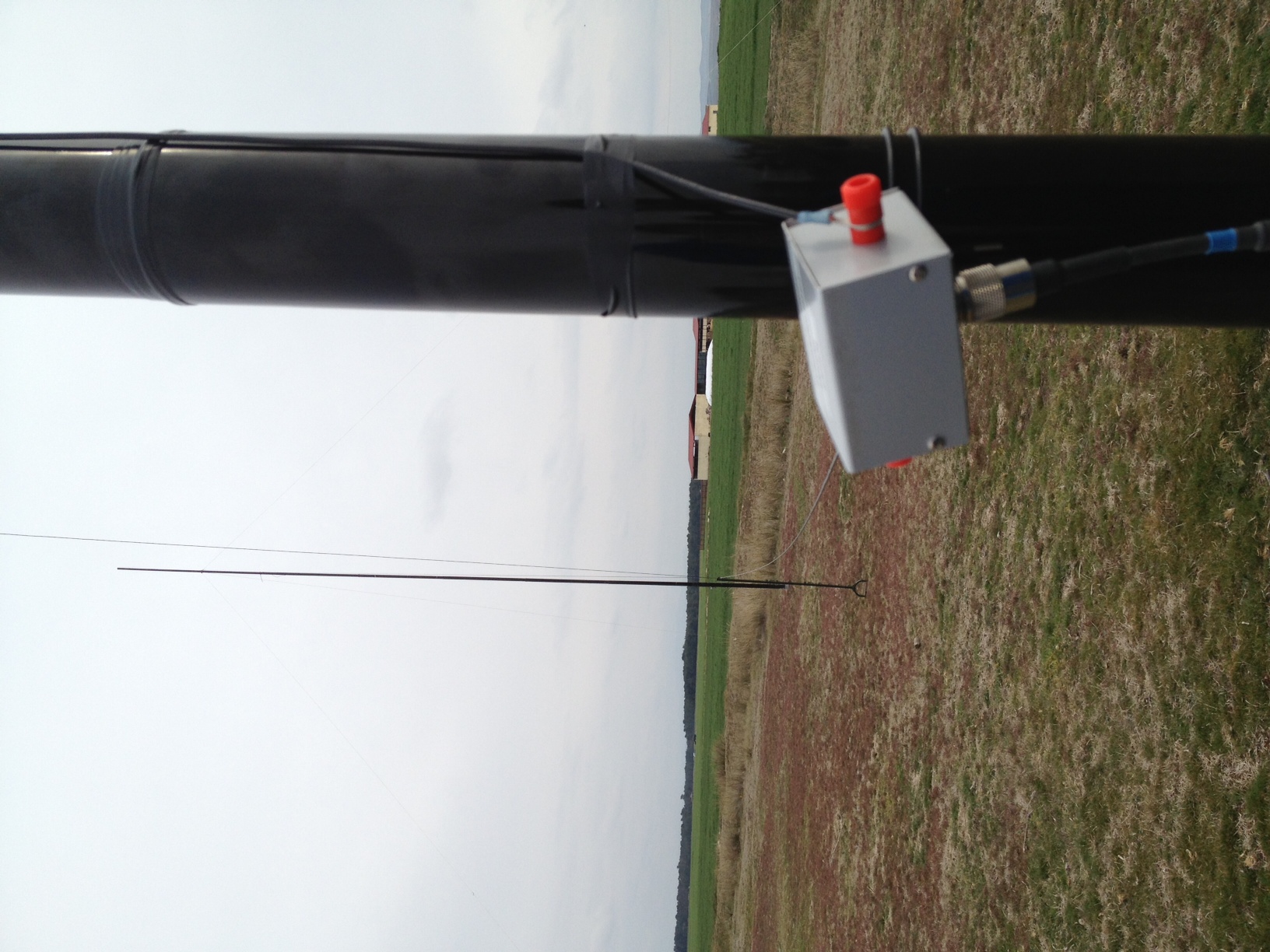
DHDL from the feed point towards the second pole
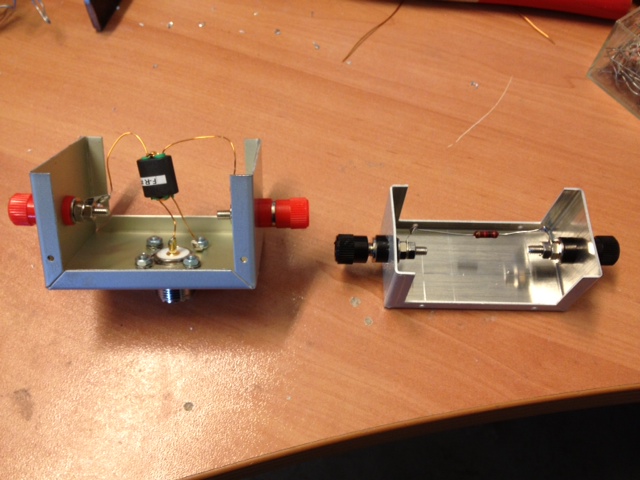
DHDL 1:18 Transformer & Resistor in their enclosures
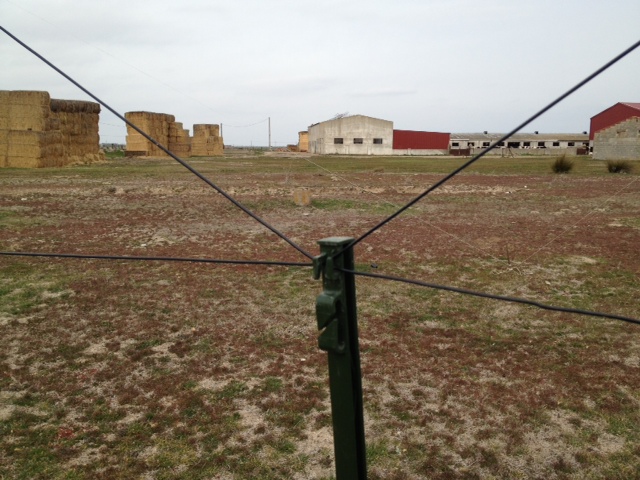
Supporting fiber pole in the center at 1,5m
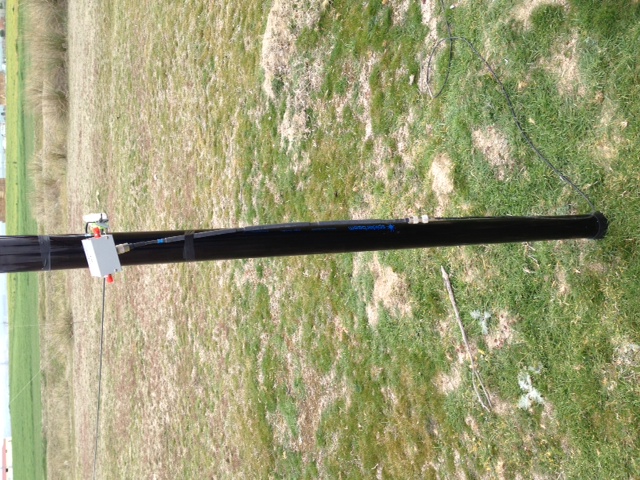
RF Choke at the base (25 ferrite beats) is crucial
With the specified dimensions, this non-resonant loop is optimized for 80m. On 40m, the Front/Back is too low and on 160m the signals will be very weak. The diagrams below show the patterns for 40m, 80m, and 160m.
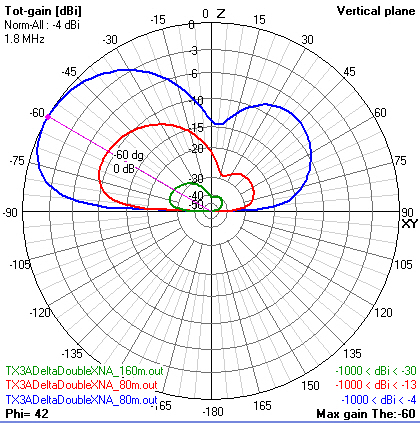
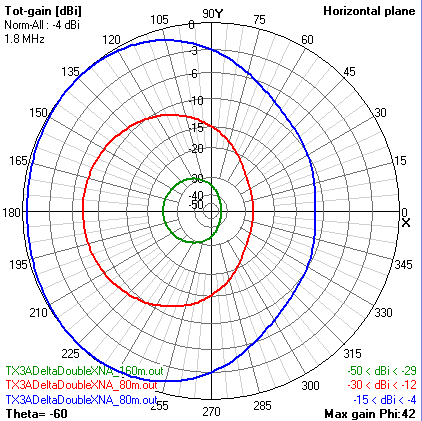
The antenna’s feed point impedance alters between 1000 - 1200Ohm (see below). I built a 1:18 transformer on a Binocular core (Fairrite #2873000202) and terminated the loop with 1000Ohm.
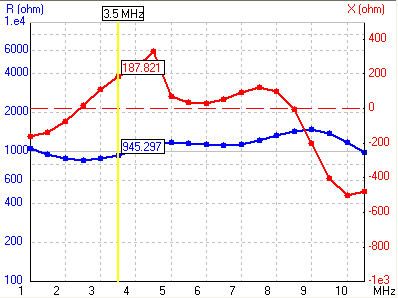
Results
Despite another receiving antenna for comparison, it eliminated very well the QRM we have at ED1R on 80m Fullsize Delta loop. On 80m I noted a very good F/B while switching between the transmission antenna and the DHDL. As expected, on 40m the F/B was only marginal and on 160m the Signals were too weak.
Bottom line: The DHDL is a solid performer for 80m. On 160m a preamp is required and on 40m the antenna is not that useful anymore.
A few words of precaution
- Make sure you don’t listen on the coax cable. Put sufficient ferrite beads on the coax, close to the feed point and close to the shack. Ground the cable in 3m distance to the feed point.
- Make sure that metallic structures don’t disturb the antenna. Fences, Towers, Verticals in the close vicinity will create problems and couple into the DHDL. Make sure that these metal objects are at least half a wavelength away. If that’s not possible you will have to de-tune your transceiving antennas - but that’s another chapter.